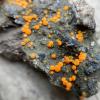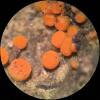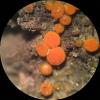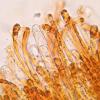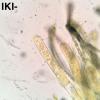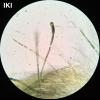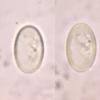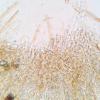
15-01-2013 22:43
Bonsoir, Good eveningI found this species on a cul

16-01-2013 01:08
Hi to all: Though I do not know his anamorph and I

12-01-2013 18:20
Gernot FriebesHi,in the above mentioned book there should be a d

14-01-2013 00:00
 Yannick Mourgues
Yannick Mourgues
Found today this Mollisia.Can't be able to find th

14-01-2013 01:37
 Pérez del Amo Carlos Manuel
Pérez del Amo Carlos Manuel
Encontrados en agujas sobre el suelo de Pinus pina

14-01-2013 12:42
Reza ShaianDear friends I have dried specimens, from forest

14-01-2013 06:22
 John Plischke
John Plischke
Today I had the chance to examine a peice of Chori

13-01-2013 11:01
 Alessio Pierotti
Alessio Pierotti
Can anyone help me to find this article:Ju Y.-M. &
Byssonectria (?) Pyronemataceae from Eastern US
Ethan Crenson,
23-04-2024 21:49
Hello all,
A friend recently found this orange asco on bare earth in a New York City park. The apothecia are orange, turbanate, sessile growing without an apparent mycelial mat on a muddy tire rut. The largest is 1.5 mm in diameter. They sometimes have a faint white marginal zone.
The apothecia are unfortunately immature. I am unable to find many ejected spores. The spores in ascus are broadly ellipsoid, smooth and small. The few I was able to measure out of the asci were approximately 9-10 x 5-6µm.
The few asci present are IKI-. Paraphyses are enlarged at the tips and contain orange pigments which stain green in IKI.
In the field I thought this might be Ramsbottomia, but the microscopy shows that it is obviously not. My next thought was Byssonectria, but the Pfister paper Synopsis of the North American Species of Byssonectria contains nothing with spores this shape and size. Byssonectria deformis, in Zotto's folder, has broadly ellipsoid spores, but much larger and it also appears to be restricted to Europe, from what I can tell.
Can anyone help with this asco?
Thank you in advance,
Ethan
Uwe Lindemann,
23-04-2024 22:23
Re : Byssonectria (?) Pyronemataceae from Eastern US
Hello Ethan,
yes, I would agree that it is a species of the genus Byssonectria. The macroscopic appearance is very typical. As for the ascospores, they look immature to me. Perhaps you should wait a few more days and then examine the ascomata again?
Best, Uwe
Ethan Crenson,
23-04-2024 22:26
Re : Byssonectria (?) Pyronemataceae from Eastern US
Thank you for your comments, Uwe. Is it possible that over the course of a few days the spores will become more fusiform in shape and grow to the size of typical North American species? They seem so different.
Uwe Lindemann,
23-04-2024 22:34
Re : Byssonectria (?) Pyronemataceae from Eastern US
No, I don't think they will become fusiform.
Best, Uwe

